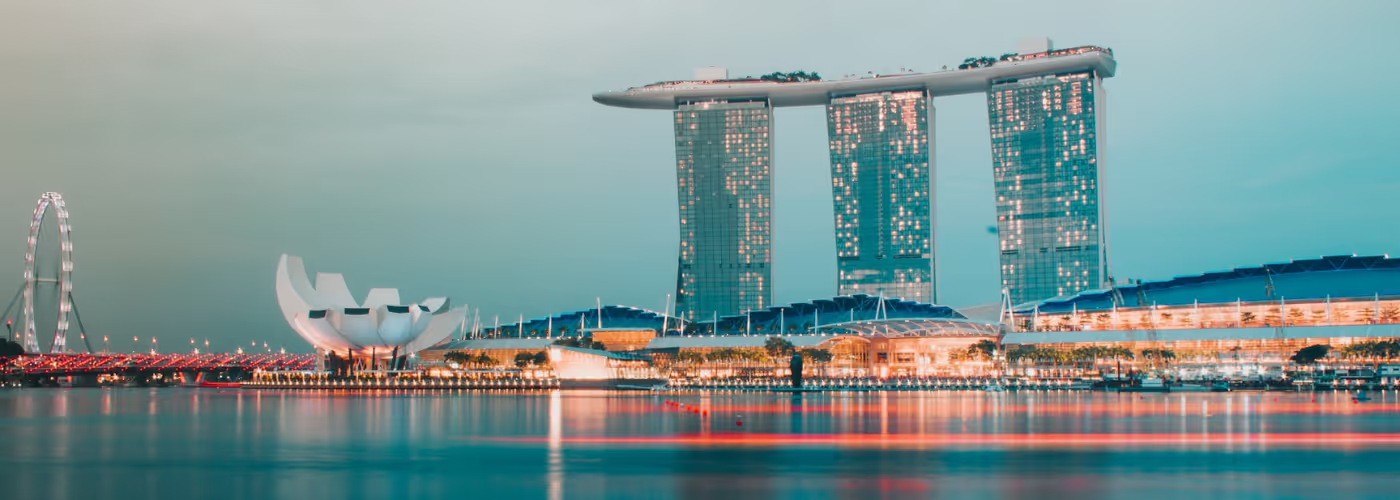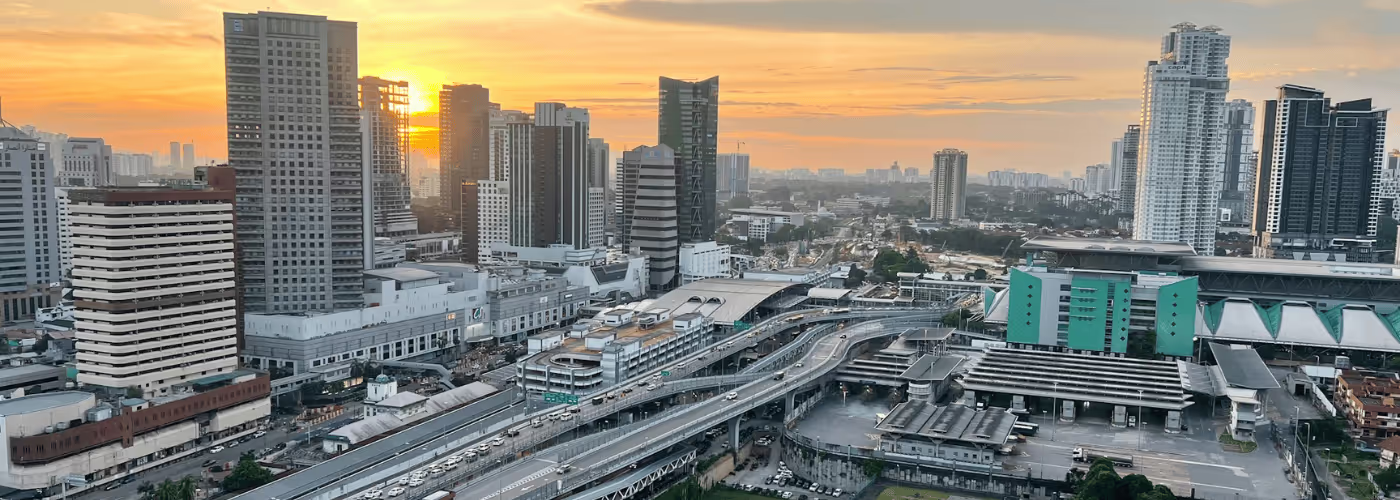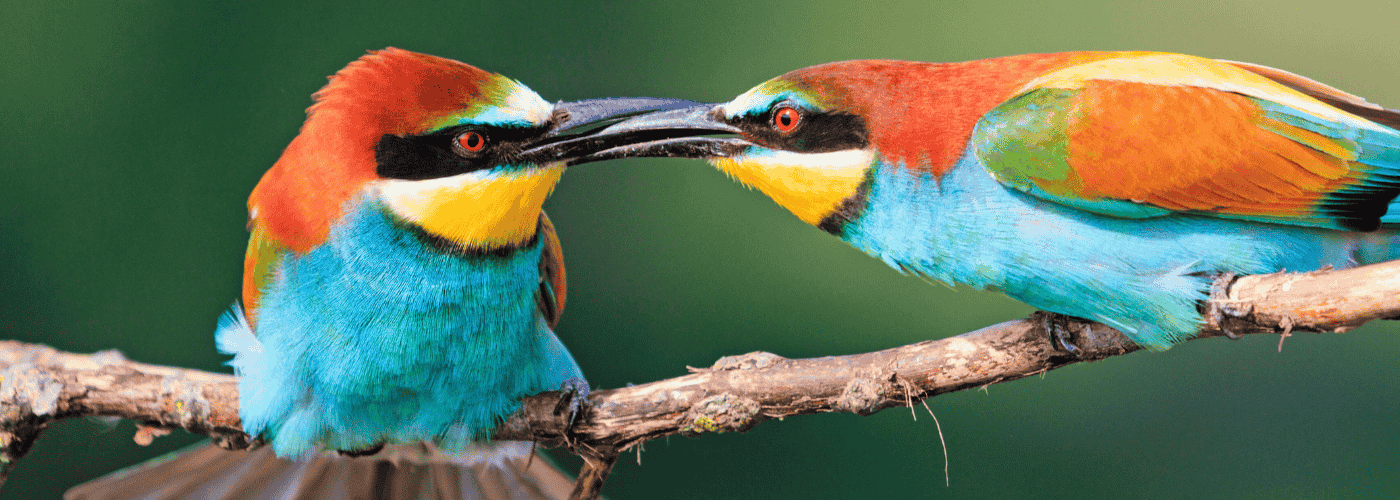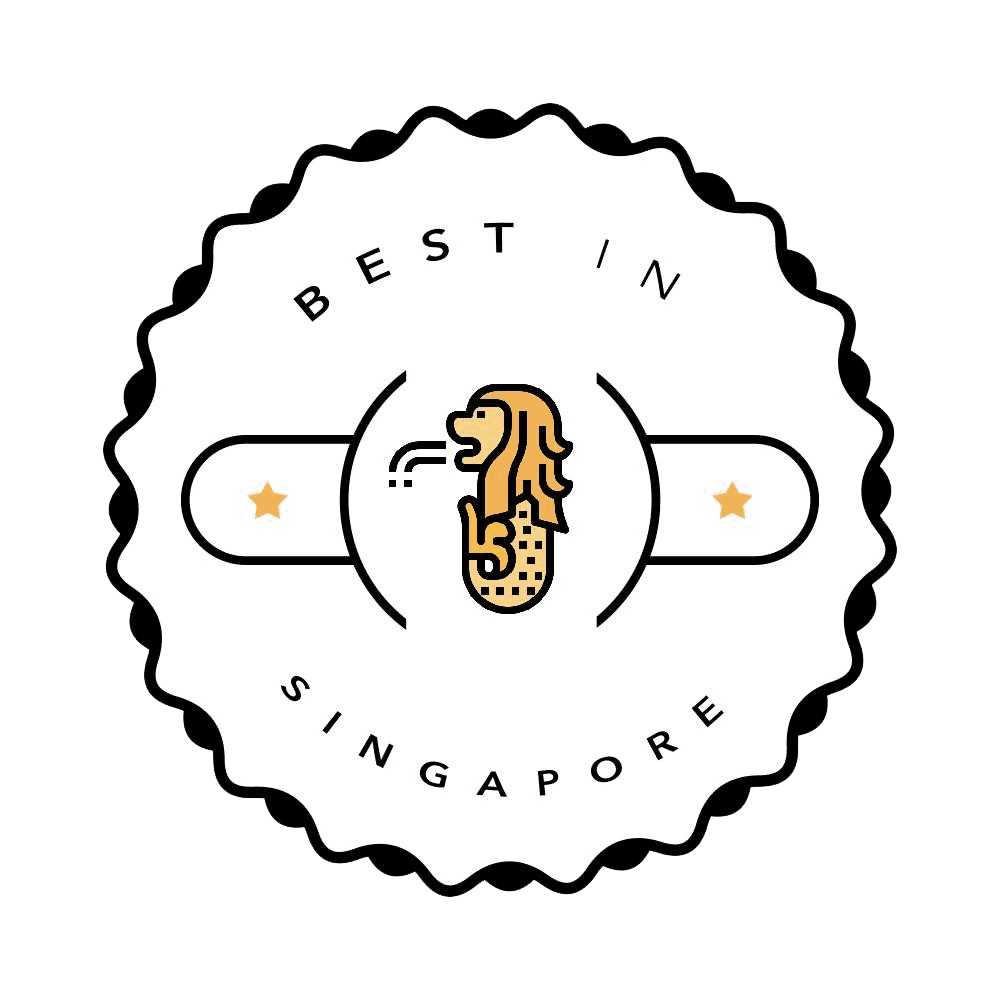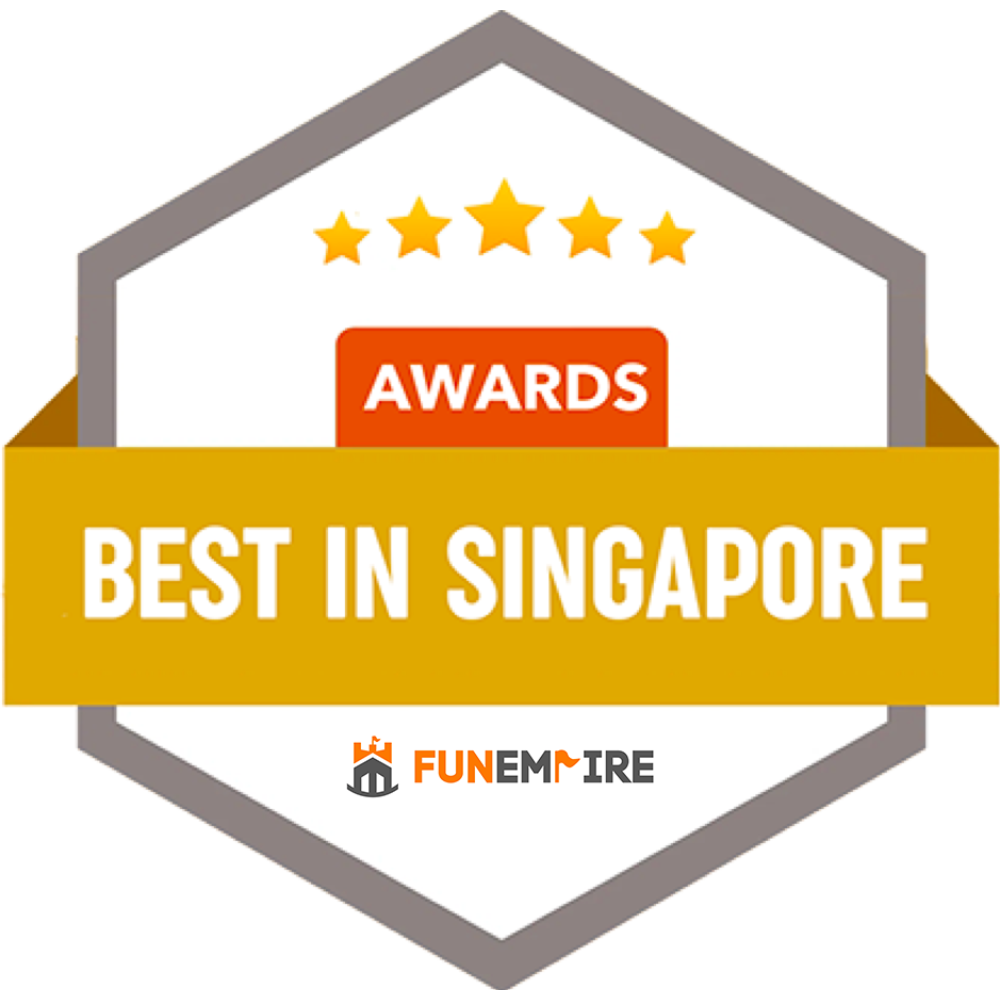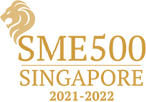Whether you're planning your first visit or returning to discover more hidden gems, this comprehensive guide will equip you with everything you need to know about Singapore.
Introduction to Singapore
Located just off the southern tip of Malaysia, Singapore may be small in size (just 728.6 square kilometres), but it's mighty in experiences. Home to approximately 5.9 million people, this dynamic island republic has transformed from a humble fishing village to one of Asia's most prosperous and forward-thinking nations.
Singapore's unique character stems from its fascinating blend of cultures – primarily Chinese, Malay, Indian, and Eurasian influences – creating a multicultural mosaic that's evident in everything from its architecture to its celebrated food scene. The city's skyline is instantly recognisable, with landmarks like the triple-towered Marina Bay Sands and the durian-shaped Esplanade dominating the waterfront.
Despite its reputation for strict regulations (yes, chewing gum is still banned), Singapore offers visitors an incredibly safe, clean, and efficient travel experience, making it perfect for first-time travellers to Asia as well as seasoned explorers.
Historical and Geographic Context
Originally named 'Singapura' (Lion City) after a Sumatran prince reportedly spotted a lion on its shores, Singapore's modern history began in 1819 when Sir Stamford Raffles established a British trading post on the island. The strategic location at the crossroads of major sea routes quickly transformed Singapore into a thriving port.
After Japanese occupation during World War II and a brief merger with Malaysia, Singapore became an independent republic in 1965. Under the leadership of its first Prime Minister Lee Kuan Yew, the nation embarked on an ambitious development programme that propelled it from a developing country to a global financial hub in just one generation.
Geographically, Singapore consists of one main island and 63 smaller islets. Lying just 137 kilometres north of the equator, it enjoys a tropical climate year-round. Though the original rainforests have largely given way to urban development, Singapore has reinvented itself as a "Garden City" with abundant green spaces and innovative eco-projects like Gardens by the Bay.
Practical Information
Language
English is one of Singapore's four official languages (alongside Mandarin, Malay, and Tamil) and is widely spoken. You'll also likely hear Singlish – the local English-based creole that incorporates elements from other languages and has a distinctive rhythm and vocabulary.
Currency
The Singapore dollar (SGD) is the local currency. Credit cards are widely accepted, but carrying some cash is useful for hawker centres and small businesses.
Climate
Singapore's tropical climate means hot and humid conditions year-round, with temperatures typically ranging from 24-32°C (75-90°F). There's no distinct dry season, though monsoon seasons bring heavier rainfall from November to January and from June to September.
Best Time to Visit
Any time is good to visit Singapore, though February to April tends to be slightly drier and less humid. The Great Singapore Sale (June-August) offers shopping bargains, while cultural festivals like Chinese New Year (January/February), Deepavali (October/November), and Hari Raya (variable dates) provide vibrant cultural experiences.
Public Holidays
Singapore celebrates holidays from various cultural traditions, including Chinese New Year, Hari Raya Puasa, Vesak Day, Deepavali, and Christmas. During these times, expect festive decorations but also potential business closures and larger crowds at attractions.
Visa Requirements
Many nationalities can enter Singapore visa-free for up to 90 days, but always check the latest requirements through the Immigration & Checkpoints Authority of Singapore. Your passport should be valid for at least six months beyond your intended stay.
SG Arrival Card Requirement
All travelers to Singapore must complete the SG Arrival Card (SGAC), including an Electronic Health Declaration, online via the official ICA website or mobile app. The SGAC must be submitted no more than three days before arrival. Exceptions apply only to those transiting through Singapore without clearing immigration and to residents entering via land checkpoints.
Electrical Outlets
Singapore uses 230V power with British-style three-pin plugs (Type G). Bring an adapter if your devices use different plugs.
Time Zone
Singapore follows Singapore Standard Time (GMT+8), the same as Western Australia, Hong Kong, and Beijing.
Business Hours
Most businesses operate from 9am-6pm on weekdays and 9am-1pm on Saturdays. Shopping centres typically open from 10am to 10pm daily. Hawker centres and restaurants have varying hours, with many open late into the night.
Connectivity
Stay connected in Singapore:
- Wi-Fi is widely available in public areas, hotels, and many restaurants
- You can purchase a local SIM card at the airport or in convenience stores
- Tourist SIM cards typically cost between S$12-30 depending on data volume and validity
Transportation Guide
Getting to Singapore
Singapore's award-winning Changi Airport is a destination in itself (featuring the spectacular indoor waterfall at Jewel Changi) and connects to over 380 cities worldwide. The country is also accessible by land from Malaysia via the Causeway or Second Link, and by sea through the Singapore Cruise Centre or Marina Bay Cruise Centre.
Public Transport
Singapore boasts one of the world's most efficient public transportation systems:
- MRT (Mass Rapid Transit): Singapore's clean, efficient subway network reaches most tourist areas. Purchase an EZ-Link card for convenient travel on both MRT and buses.
- Buses: Extensive and comfortable bus services cover routes the MRT doesn't reach. Air-conditioned buses are the norm.
- Taxis and Ride-Hailing: Taxis are regulated, metered, and plentiful. Ride-hailing apps like Grab offer a convenient alternative.
- Private Limousine Service: For a premium experience, Prime Aces limousine services provide comfortable, hassle-free transportation with professional drivers. These services are particularly convenient for airport transfers or full-day city tours.
Getting Around
Singapore is relatively compact, with many attractions clustered in central districts, making it navigable by public transport. Walking is pleasant in many areas, though the tropical heat may be challenging during midday hours. The city is also becoming increasingly cycle-friendly, with dedicated bike paths in many areas.
Most tourist destinations are well-connected by public transport and journey times between major attractions rarely exceed 30 minutes. Singapore's excellent transport apps (like SG NextBus or MyTransport Singapore) make planning journeys straightforward.
Accessibility
Singapore has made significant efforts to improve accessibility, with most MRT stations equipped with lifts and tactile guidance systems. Many buses are wheelchair-accessible, and major attractions provide facilities for visitors with disabilities.
Attractions and Activities
Major Landmarks
- Marina Bay Sands: This iconic triple-towered complex features a luxury hotel, shopping mall, museum, casino, and the famous rooftop infinity pool (hotel guests only) with stunning city views.
- Gardens by the Bay: Futuristic garden featuring Supertree Grove, Cloud Forest, and Flower Dome conservatories. The evening light shows are spectacular and free.
- Sentosa Singapore Island: Singapore's playground with beaches, Universal Studios, Singapore Oceanarium, Adventure Cove Waterpark, and numerous other attractions.
- Singapore Zoo, Night Safari, River Safari, and Bird Park: World-class wildlife experiences operated by Wildlife Reserves Singapore.
- Merlion Park: Home to Singapore's official mascot, the mythical Merlion (half-lion, half-fish), with great views of Marina Bay.
Historical and Cultural Sites
- Singapore Botanic Gardens: UNESCO World Heritage Site featuring the National Orchid Garden.
- Chinatown: Historic district with temples, shophouses, markets, and excellent food options.
- Little India: Vibrant neighbourhood with colourful temples, spice shops, and authentic Indian cuisine.
- Kampong Glam: Singapore's Arab Quarter centred around the majestic Sultan Mosque, with trendy cafes and boutiques on Haji Lane.
- Peranakan Houses: Colourful heritage homes showcasing the unique Peranakan culture, especially along Joo Chiat Road.
- Civil District: Historic area with landmarks like Raffles Hotel, National Museum, and St. Andrew's Cathedral.
Museums
- National Museum of Singapore: Covers Singapore's history and cultural development.
- ArtScience Museum: Iconic lotus-shaped building hosting innovative exhibitions at the intersection of art, science, and technology.
- National Gallery Singapore: Impressive collection of Southeast Asian art housed in the former Supreme Court and City Hall.
- Asian Civilisations Museum: Exploring the diverse cultural heritage of Asia.
- Peranakan Museum: Dedicated to the unique Peranakan culture (currently under renovation until 2023).
Parks and Nature
- Southern Ridges: 10km trail connecting parks with spectacular elevated walkways including Henderson Waves bridge.
- Pulau Ubin: Rustic island accessible by bumboat, perfect for cycling and seeing traditional kampong (village) life.
- MacRitchie Reservoir: Nature park featuring the popular TreeTop Walk suspension bridge.
- East Coast Park: Seaside park with beaches, cycling paths, water sports, and food centres.
- Sungei Buloh Wetland Reserve: Nature sanctuary for migratory birds and mangrove wildlife.
Shopping
- Orchard Road: Premier shopping belt with numerous malls and department stores.
- Bugis Street: Popular market-style shopping with boutiques and bargains.
- VivoCity: Singapore's largest mall, near Sentosa Island.
- Haji Lane: Quirky independent boutiques and vintage shops.
- Design Orchard: Showcasing Singapore designers and brands.
Family-Friendly Activities
- Universal Studios Singapore: Theme park with rides and attractions based on popular films.
- Singapore Oceanarium: One of the world's largest aquariums.
- Singapore Science Centre: Interactive exhibits making science fun for all ages.
- KidZania Singapore: Educational indoor theme park where children can role-play various professions.
- Wild Wild Wet: Water theme park in Pasir Ris.
Unique Experiences
- Singapore Flyer: Massive observation wheel offering panoramic views.
- Night Safari: World's first nocturnal wildlife park.
- Singapore Food Festival: Annual event celebrating local cuisine (usually in July).
- Changi Experience Studio: Interactive exhibits about Singapore's award-winning airport.
- Singapore River Cruise: Traditional bumboat tour showcasing riverside landmarks.
Suggested Itineraries
3-Day Highlights:
- Day 1: Marina Bay area, Gardens by the Bay
- Day 2: Cultural neighbourhoods (Chinatown, Little India, Kampong Glam)
- Day 3: Sentosa Island
5-Day Experience:
- Add wildlife attractions (Zoo, Night Safari)
- Explore more local neighbourhoods like Tiong Bahru
- Day trip to Pulau Ubin
- Evening at Clarke Quay or Boat Quay
Business Traveller's Free Day:
- Morning: Gardens by the Bay
- Afternoon: Shopping on Orchard Road
- Evening: Singapore River dining at Boat Quay
Food and Dining Scene
Singapore's food scene is legendary, earning UNESCO recognition with its hawker culture. The city offers everything from humble hawker stalls to Michelin-starred establishments.
Local Cuisine
- Hainanese Chicken Rice: Tender poached chicken with fragrant rice, often called Singapore's national dish.
- Laksa: Spicy coconut milk-based noodle soup with prawns or chicken.
- Chilli Crab: Singapore's iconic seafood dish featuring crab in a sweet-spicy tomato and chilli sauce.
- Satay: Skewered grilled meat served with peanut sauce.
- Kaya Toast: Traditional breakfast of coconut jam toast with soft-boiled eggs and coffee.
- Char Kway Teow: Stir-fried flat rice noodles with soy sauce, chilli, seafood, and Chinese sausage.
- Roti Prata: South Indian flatbread served with curry.
- Nasi Lemak: Coconut rice dish with various accompaniments.
Popular Dining Areas
- Hawker Centres: Lau Pa Sat, Maxwell Food Centre, Old Airport Road Food Centre, Chinatown Complex, and Newton Food Centre offer affordable local delicacies.
- East Coast Seafood Centre: Popular for chilli crab and other seafood.
- Dempsey Hill: Upscale restaurants in colonial-era buildings.
- Clarke Quay and Boat Quay: Riverside dining and nightlife.
- Keong Saik Road: Trendy area with innovative restaurants and bars.
- Orchard Road: Dining options in malls along this shopping belt.
Budget-Friendly Options
Hawker centres are your best bet for authentic, affordable meals, with dishes typically ranging from $3-6 SGD. Food courts in malls offer similar fare in air-conditioned comfort at slightly higher prices.
Fine Dining
Singapore boasts numerous Michelin-starred restaurants, including Odette, Les Amis, and Burnt Ends. For a special experience, try the world's first Michelin-starred hawker stall, Hill Street Tai Hwa Pork Noodle or Hawker Chan (though the latter has since lost its star).
Halal Options
Singapore caters well to Muslim travellers with numerous halal-certified establishments. Look for the halal certification logo or visit areas like Arab Street for authentic Middle Eastern and Mediterranean cuisine.
Food Tours
Several operators offer guided food tours of hawker centres and ethnic enclaves, helping visitors navigate the seemingly overwhelming variety of local dishes.
Dining Etiquette
- At hawker centres, "choping" (reserving) a table by leaving a packet of tissues or other personal item is acceptable while ordering.
- When eating at hawker centres, return your trays and dishes to designated areas.
- Tipping is not expected in Singapore, as most restaurants include a 10% service charge.
Accommodation Options
Singapore offers accommodation for every budget, from backpacker hostels to ultra-luxury hotels.
Luxury Stays
- Marina Bay Sands: Iconic three-tower hotel with the famous rooftop infinity pool.
- Raffles Hotel: Historic colonial-era luxury hotel, home of the Singapore Sling cocktail.
- Capella Singapore: Luxurious resort on Sentosa Island.
- The Fullerton Hotel: Heritage building converted into a five-star hotel.
- Mandarin Oriental: Premium hotel with spectacular views of Marina Bay.
Mid-Range Options
- Hotel G Singapore: Stylish boutique hotel near Bugis.
- YOTEL Singapore: Modern hotel with compact, efficiently designed rooms on Orchard Road.
- Park Hotel Group: Various properties offering reliable mid-range accommodation.
- Holiday Inn Express: Several locations providing comfortable, no-frills stays.
- Ibis Singapore: Budget-friendly chain with central locations.
Budget Stays
- Capsule hotels like CUBE Boutique Capsule Hotel offer minimalist, Japanese-style sleeping pods.
- Hostels in areas like Little India and Chinatown provide dormitory accommodation from $20 SGD per night.
- Budget hotel chains like Hotel 81 and Fragrance Hotel offer basic private rooms at affordable rates.
Serviced Apartments
For longer stays, serviced apartments provide more space and kitchen facilities. Popular options include Fraser Residence, Ascott, and Somerset properties throughout the city.
Neighbourhood Recommendations
- Marina Bay: Luxury options with spectacular views, convenient for business and main attractions.
- Orchard Road: Excellent for shopping enthusiasts, with many mid to high-end hotels.
- Chinatown: Cultural immersion with a range of budget to mid-range options.
- Little India: Budget-friendly area with authentic cultural experiences.
- Sentosa Island: Resort atmosphere away from the city centre.
- Bugis and Kampong Glam: Trendy area with boutique hotels and good transport connections.
Booking Tips
- Singapore hotels can be expensive, especially during major events like F1 Grand Prix (September) or the National Day period (August).
- Book well in advance for the best rates, particularly during peak tourist seasons.
- Consider staying near an MRT station for convenient access to attractions.
- Many hotels offer free smartphone loans with unlimited data for guests to use during their stay.
Safety and Cultural Etiquette
Safety Tips
Singapore consistently ranks among the world's safest countries for travellers. Violent crime is extremely rare, but take normal precautions:
- Be mindful of belonging in crowded places.
- Don't leave valuables unattended.
- Use licensed taxis or reputable ride-hailing apps.
The biggest safety concerns for visitors are typically heat-related issues and occasional petty theft. Stay hydrated and be particularly careful during Singapore's frequent afternoon thunderstorms.
Emergency Contacts
- Police: 999
- Ambulance/Fire: 995
- Non-emergency ambulance: 1777
- Tourism hotline: 1800 736 2000
Common Scams
While scams are uncommon in Singapore, be wary of:
- Unlicensed tour guides offering "special deals"
- Overcharging at some smaller souvenir shops
- Counterfeit goods at too-good-to-be-true prices
Cultural Norms
- Singaporeans generally value orderliness, courtesy, and respect for personal space.
- Queuing is taken seriously – always join the end of any line.
- Public displays of affection beyond holding hands may be frowned upon.
- While casual attire is acceptable in most places, more conservative dress is appropriate when visiting religious sites.
Religious Practices
- Remove shoes before entering temples, mosques, and some homes.
- Ask permission before taking photos in places of worship.
- During religious festivals, be respectful of processions and ceremonies.
Tipping
Tipping is not customary in Singapore. Most restaurants already include a 10% service charge and 7% GST in the bill. Taxi drivers don't expect tips either, though rounding up the fare is appreciated.
Local Phrases
While English is widely spoken, learning a few local phrases can enhance your experience:
- "Thank you" in Mandarin: Xiè xiè (syeh-syeh)
- "Thank you" in Malay: Terima kasih (teh-ree-mah kah-seh)
- "Hello" in Mandarin: Nǐ hǎo (nee-how)
- "Hello" in Malay: Selamat (seh-lah-mat)
- Singlish phrases: "Can" (ok/possible), "Lah" (emphasis particle added to end of sentences)
Photography Etiquette
Ask permission before photographing individuals, especially in markets and neighbourhoods. Some museums and attractions prohibit photography or tripod use, so check policies beforehand.
Business Traveller Information
Business Landscape
Singapore is a global financial centre and business hub, particularly for industries like banking, shipping, petroleum, and technology. The World Bank consistently ranks Singapore among the easiest places to do business globally.
Major Business Districts
- Central Business District (CBD): Around Raffles Place and Shenton Way
- Marina Bay Financial Centre: Extension of the CBD with modern office complexes
- Suntec City: Convention centre and offices
- One-North: Research and development hub focused on biomedical sciences, ICT, and media
- Changi Business Park: Business park near the airport
Convention Centres
- Singapore EXPO: Largest convention centre, near Changi Airport
- Suntec Singapore Convention & Exhibition Centre: Central location with extensive facilities
- Marina Bay Sands Convention Centre: Luxurious venue with cutting-edge technology
- Resorts World Convention Centre: On Sentosa Island
Business Services
Most major hotels offer business services including printing, meeting rooms, and secretarial assistance. For more comprehensive needs:
- Serviced Offices: Companies like Regus and WeWork offer temporary office solutions.
- Co-working Spaces: The Working Capitol, JustCo, and others provide flexible workspace options.
Business Dining
- Upscale options: JAAN by Kirk Westaway, Odette, Les Amis
- Business lunch deals: Many fine dining restaurants offer more affordable set lunches
- Private dining rooms: Imperial Treasure, Min Jiang, and Shisen Hanten
- Unique venues: CE LA VI, Spago, and 1-Altitude for impressive client entertainment
Business Etiquette
- Punctuality is highly valued – arrive on time or slightly early for meetings.
- Business cards are exchanged at the beginning of meetings, presented and received with both hands.
- Handshakes are the common greeting, though some may use a slight bow.
- Relationship-building is important; expect some social conversation before business discussions.
- Dress code is formal for most business settings despite the tropical climate.
Executive Transport
For business travellers who value efficiency and comfort, private limousine services offer:
- Professional, punctual drivers familiar with business districts
- Modern, well-maintained luxury vehicles
- Door-to-door service
- Privacy for calls or preparation between meetings
- Flexibility with scheduling changes
After-Hours Entertainment
- Clarke Quay and Boat Quay: Riverside dining and bars
- Club Street: Upscale wine bars and restaurants
- Marina Bay: Rooftop bars with spectacular views
- Ann Siang Hill: Trendy bars and restaurants in heritage shophouses
Conclusion
As your Singapore adventure draws to a close, ensure the final leg—from your hotel to Changi Airport—is as effortless as the rest of your trip. A thoughtfully arranged Chauffeur Service offers door-to-door comfort, allowing you to relax while a professional driver navigates traffic and timing.
For an extra layer of ease, consider an Airport Transfer Service that ensures you arrive punctually and in peace, without the worry of transport logistics. This gentle, hassle-free option lets you focus on enjoying every last moment in Singapore rather than juggling airport transfers.
